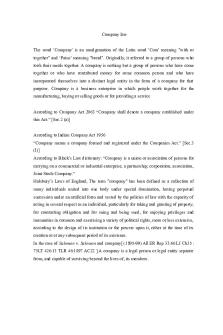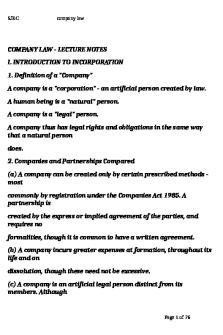16-5Hess\'s Law - Lecture notes 2 PDF

| Title | 16-5Hess\'s Law - Lecture notes 2 |
|---|---|
| Author | Matt Oragon |
| Course | Information Technology |
| Institution | STI College |
| Pages | 1 |
| File Size | 34 KB |
| File Type | |
| Total Downloads | 34 |
| Total Views | 125 |
Summary
notes...
Description
Hess’s Law
Name ________________
Chem Worksheet 16-5 1. From the following enthalpy changes,
6.
C (s) + ½ O2 (g) → CO (g)
∆H° = -110.5 kJ
2P (s) + 3Cl 2 (g) → 2PCl3 (l)
∆H° = -640 kJ
CO (g) + ½ O 2 (g) → CO2 (g)
∆H° = -283.0 kJ
2P (s) + 5Cl 2 (g) → 2 PCl 5 (s)
∆H° = -886 kJ
calculate the value of ∆H° for the reaction C(s) + O 2 (g) → CO 2 (g).
calculate the value of ∆H° for the reaction PCl3 (l) + Cl2 (g) → PCl5 (s) . 7.
2.
From the following enthalpy changes, Xe (g) + F2 (g) → XeF2 (s)
∆H° = -123 kJ
Xe (g) + 2F 2 (g) → XeF4 (s)
∆H° = -262 kJ
∆H° = -1170 kJ 4NH3 (g) + 3O 2 (g) → 2N2 (g) + 6H 2O (l) ∆H° = -1530kJ
calculate the value of ∆H° for the reaction N2 (g) + O2 (g) → 2NO (g).
From the following enthalpy changes, C2 H5 OH (l) + 3O2 (g) → 2CO 2 (g) + 3H 2O (g)
8.
∆H° = -1234.7 kJ CH3OCH 3 (l) + 3O2 (g) → 2CO 2 (g) + 3H2 O (g)∆H° = -1328.3 kJ
From the following enthalpy changes,
9.
2Al (s) + 3/2 O2 (g) → Al2 O3 (s)
∆H° = -1601 kJ
2Fe (s) + 3/2 O2 (g) → Fe2 O3 (s)
∆H° = -821 kJ
From the following enthalpy changes,
Cu (s) + Cl 2 (g) → CuCl 2 (s)
∆H° = -206 kJ
H2O2 (l) → H2 O (l) + ½ O2 (g)
2Cu (s) + Cl 2 (g) → 2CuCl (s)
∆H° = -136 kJ
H2 (g) + ½ O2 (g) → H 2 O (l)
From the following enthalpy changes,
∆H° = -94.6 kJ ∆H° = -286.0 kJ
calculate the value of ∆H° for the reaction H2 (g) + H2 O2 (l) → 2H2O (l).
calculate the value of ∆H° for the reaction CuCl2 (s) + Cu (s) → 2CuCl (s). 5.
From the following enthalpy changes,
calculate the value of ∆H° for the reaction 2Al(s) + Fe2 O3(s) → 2Fe(s) + Al 2 O3(s).
calculate the value of ∆H° for the reaction C2H 5OH (l) → CH3OCH 3 (l). 4.
From the following enthalpy changes, 4NH3 (g) + 5O 2 (g) → 4 NO (g) + 6H2O (l)
calculate the value of ∆H° for the reaction XeF2 (s) + F2 (g) → XeF4 (s). 3.
From the following enthalpy changes,
10.
From the following enthalpy changes,
H2 (g) + F 2 (g) → 2HF (g)
∆H° = -542.2 kJ
C (s) + O2 (g) → CO2 (g)
∆H° = -393.5 kJ
2H2 (g) + O2 (g) → 2H2O (l)
∆H° = -571.6 kJ
H2 (g) + ½ O2 (g) → H 2 O (l)
∆H° = -285.8 kJ
calculate the value of ∆H° for the reaction 2F2 (g) + 2H2O (l) → 4HF (g) + O2 (g)
Honors Chemistry
2C2 H2 (g) + 5O 2 (g) → 4CO 2(g) + 2H2 O(l) ∆H°=-2598.8kJ
calculate the value of ∆H° for the reaction 2C(s) + H2 (g) → C2 H2 (g). WS16-5HessLaw...
Similar Free PDFs

CL LAW - Lecture notes 2
- 6 Pages

Partnership law - Lecture notes 2
- 17 Pages

Family Law Lecture Notes
- 6 Pages

Mercantile Law lecture notes
- 37 Pages

Criminal Law Lecture Notes
- 123 Pages

Land Law - Lecture notes
- 59 Pages

Hospitality Law Lecture Notes
- 32 Pages

Commercial law lecture notes
- 46 Pages

Property Law - lecture notes
- 112 Pages

Law Lecture Notes - 2019
- 6 Pages

Company law lecture notes
- 9 Pages

COMPANY LAW -LECTURE NOTES
- 48 Pages

Lecture Notes, Charge, Land Law 2
- 33 Pages
Popular Institutions
- Tinajero National High School - Annex
- Politeknik Caltex Riau
- Yokohama City University
- SGT University
- University of Al-Qadisiyah
- Divine Word College of Vigan
- Techniek College Rotterdam
- Universidade de Santiago
- Universiti Teknologi MARA Cawangan Johor Kampus Pasir Gudang
- Poltekkes Kemenkes Yogyakarta
- Baguio City National High School
- Colegio san marcos
- preparatoria uno
- Centro de Bachillerato Tecnológico Industrial y de Servicios No. 107
- Dalian Maritime University
- Quang Trung Secondary School
- Colegio Tecnológico en Informática
- Corporación Regional de Educación Superior
- Grupo CEDVA
- Dar Al Uloom University
- Centro de Estudios Preuniversitarios de la Universidad Nacional de Ingeniería
- 上智大学
- Aakash International School, Nuna Majara
- San Felipe Neri Catholic School
- Kang Chiao International School - New Taipei City
- Misamis Occidental National High School
- Institución Educativa Escuela Normal Juan Ladrilleros
- Kolehiyo ng Pantukan
- Batanes State College
- Instituto Continental
- Sekolah Menengah Kejuruan Kesehatan Kaltara (Tarakan)
- Colegio de La Inmaculada Concepcion - Cebu


